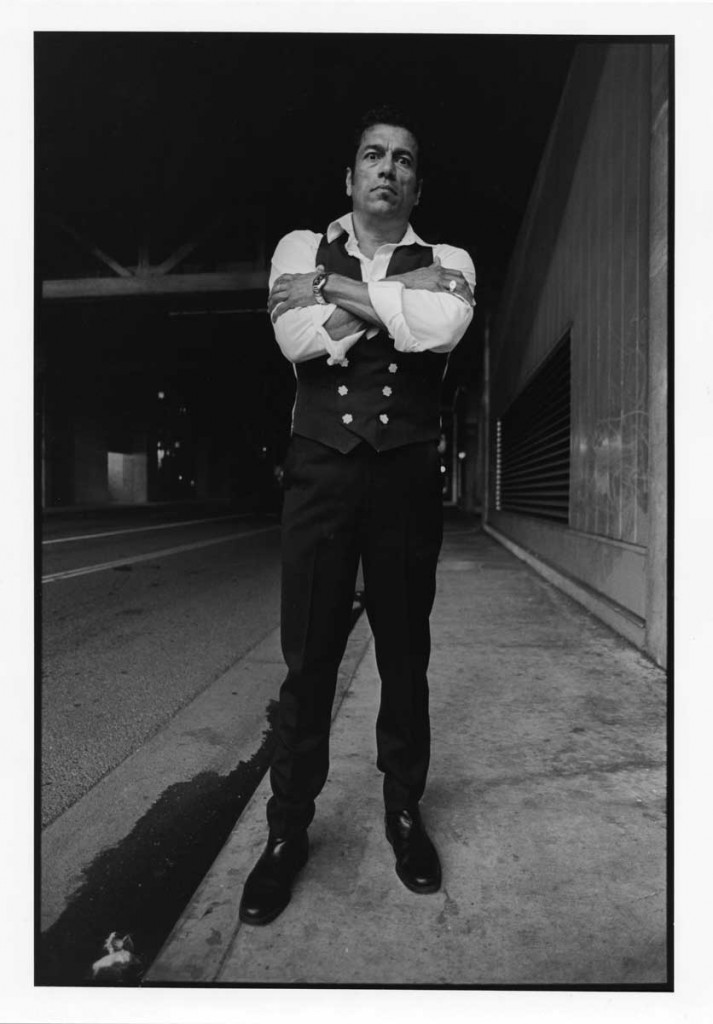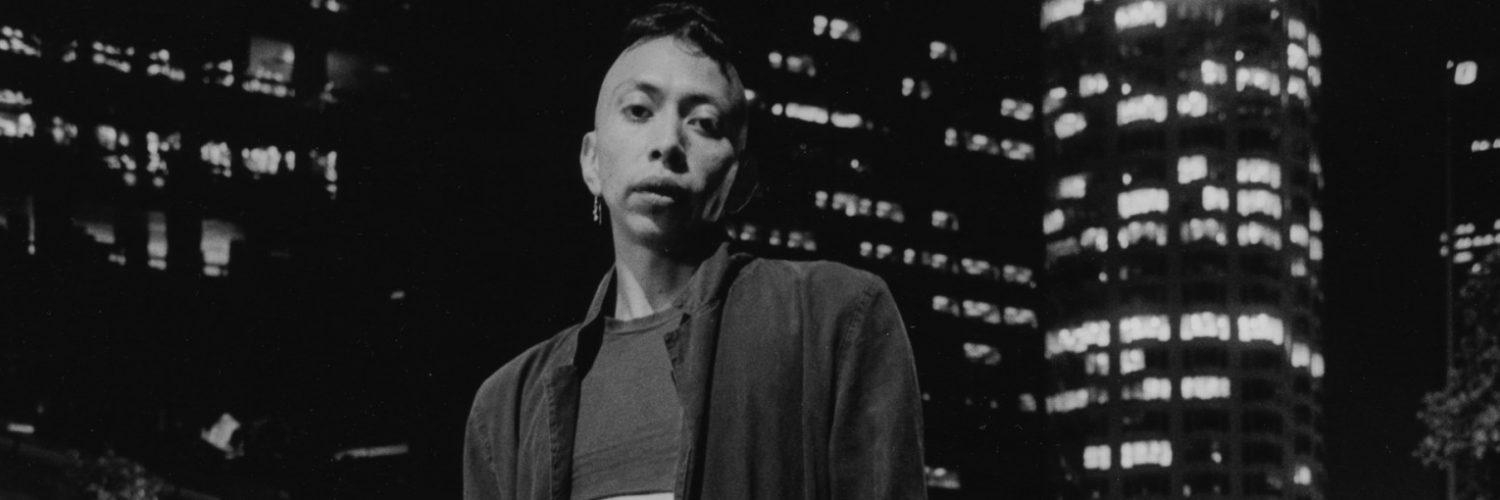
The Autry Museum of the American West will mount the first comprehensive exhibition of photographer, essayist, and performance artist Harry Gamboa Jr.’s ongoing series, Chicano Male Unbonded. Opening September 16, 2017, the exhibition includes more than 90 images, including recent work and photographs on view for the first time. The black-and-white portraits call into question the assumptions society has of men of Mexican descent.
“I created this work as a way to counter the negative stereotypes people have of Chicano men,” said Gamboa. “They are all photographs of men I know on some personal level. Some I know from academia and the art world, others are family or friends. It’s very interesting to stand back and listen as viewers speculate on who the men are. I’ve heard people comment, just from looking at the pictures, that they are gang members. But then they get closer, read the descriptions and discover that the ‘gang members’ are lawyers, Ph.Ds, artists and novelists. In these days, when political talk includes discussion about the mass deportation of Mexicans and Mexican males in particular are negatively portrayed, this work stands out.”
Conceived in 1991 and continuing today, Gamboa’s Chicano Male Unbonded comprises nearly 100 portraits and counting, each a gelatin silver print made from the original 35 mm negative. Situated within various aspects of Los Angeles’s distinctive urban geography, the sitters are drawn from the intellectual, artistic, academic, and performance-based communities and together comprise the Chicano avant-garde.
A testament to the cultural power of the Chicano male “unbound” from stereotype and cliché, each portrait possesses a distinct narrative, one that interweaves the subject’s creative life with his connection to his community and the artist. In the process a new narrative of L.A. is collectively imagined—a combination of street cred with academic and artistic diligence—a corrective to the imbalance of power and visibility that Mexican Americans have long experienced. Sharp, witty, full of attitude and resilience, the series also reflects the overall strategy of the Chicano Movement and the artist-as-activist within it. In its powerful visuals and stories of both achievement and adversity, Chicano Male Unbonded is a vital look at a critical population.
Amy Scott, the Autry’s Chief Curator and Marilyn B. and Calvin B. Gross Curator of Visual Arts, said Gamboa’s Chicano Male Unbonded series “provides a unique lens for thinking through society’s perceptions of men in the Chicano community.”
“Through Gamboa’s aesthetic choices, the series deftly opens up conversations around race and identity in Los Angeles, and the West at large,” Scott said. “What’s also fascinating about Chicano Male Unbonded is how Gamboa calls attention to these issues through the traditions of photographic portraiture.”
Timed to coincide with the opening of the Autry’s new LA RAZA exhibition, Harry Gamboa Jr.: Chicano Male Unbonded opens the Autry not only to Chicano art and photography enthusiasts, but to anyone interested in the intersections of race, politics, and art as activism in Los Angeles and the American West. From the damage done by stereotypes to the camera as a tool of empowerment, the series further expands upon multiple narratives critical to LA RAZA.
“We are thrilled to present Harry Gamboa’s portraits, which, together with our LA RAZA exhibition, reveal diverse perspectives of the Chicano experience in Los Angeles,” said W. Richard West, Jr., President and CEO of the Autry. “In the context of our polarized political climate, Gamboa’s work compells and furthers important conversations among our visitors.”
Gamboa entered the Los Angeles art scene in the early 1970s as a founding member of the multi-media arts collective Asco, which created work in response to the socioeconomic and political injustices the Chicano community faced. From his early days as a leader of the Chicano art movement and as an activist, Gamboa has sought to correct the historic imbalance of power and visibility that Chicanos and Mexican Americans have long experienced. Gamboa’s work is represented in museum collections worldwide, including the Whitney Museum of American Art, the Smithsonian American Art Museum, and the Los Angeles County Museum of Art.
Harry Gamboa Jr.: Chicano Male Unbonded is separate from—but proudly presented in concert with—the Autry’s LA RAZA exhibition.

Chicano Male Unbonded – Photographic exhibition
September 16, 2017–August 8, 2018
The Autry Museum in Griffith Park
4700 Western Heritage Way,
Los Angeles, CA 90027-1462
Museum and Store Hours
Tuesday–Friday: 10:00 a.m.–4:00 p.m.
Saturday–Sunday: 10:00 a.m.–5:00 p.m.
Closed Mondays.
About the Autry Museum of the American West:
The Autry is a museum dedicated to exploring and sharing the stories, experiences, and perceptions of the diverse peoples of the American West, connecting the past to the present to inspire our shared future. The museum presents a wide range of exhibitions and public programs—including lectures, film, theatre, festivals, family events, and music—and performs scholarship, research, and educational outreach. The Autry’s collection of more than 500,000 pieces of art and artifacts includes the Southwest Museum of the American Indian Collection, one of the largest and most significant of Native American materials in the United States.
Museum admission is $14 for adults, $10 for students and seniors 60+, $6 for children ages 3-12, and free for Autry members, veterans, and children age 2 and under. Admission is free on the second Tuesday of every month.
Museum and Autry Store:
Tuesday–Friday, 10:00 a.m.–4:00 p.m.
Saturday and Sunday, 10:00 a.m.–5:00 p.m.
Crossroads West Cafe:
Tuesday–Friday, 10:00 a.m.–4:00 p.m.
Saturday and Sunday, 9:00 a.m.–5:00 p.m.
The museum, store, and cafe are closed on Mondays. Visit TheAutry.org for more information.
*Please note that the museum, store, and cafe will close at 2:00 p.m. on Saturday, October 7.







